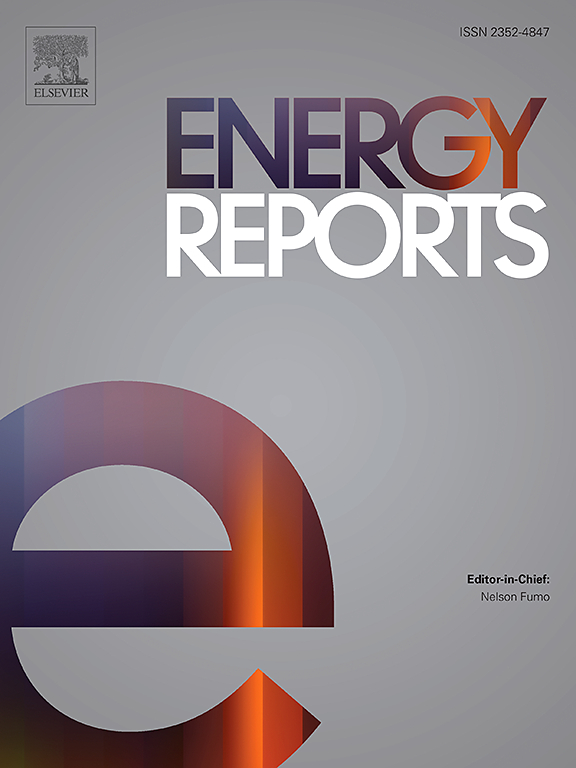Optimizing double-pass solar air collector efficiency: Impact of a perforated discrete V-angled fins
IF 4.7
3区 工程技术
Q2 ENERGY & FUELS
引用次数: 0
Abstract
The current study evaluates the impact of newly designed perforated discrete V- angled fins on the thermal efficiency of double pass solar air collectors (DPSACs). While previous studies have examined various fin shapes for heat transfer enhancement, no research has focused on discrete V- angled fins specifically within DPSACs. Addressing this gap, the objective of this study is to assess the effectiveness of three unique configurations of the V- angled fin design: Type I (aligned parallel to airflow), Type II (angled at 45˚ to airflow), and Type III (perpendicular to airflow). Experiments compared a finned collector against a standard smooth model at airflow rates of 0.00932 kg/s, 0.01143 kg/s, and 0.01311 kg/s to determine the influence of fin presence and orientation on DPSAC performance. The results demonstrated the finned collector consistently outperformed the smooth collector, achieving relative daily efficiency improvements ranging from 4.1 % to 9.1 %. Specifically, Type I improved between 4.1 % and 5.1 %, Type II showed gains between 5.9 % and 9.1 %, and Type III achieved relative improvements between 4.3 % and 6.1 %. These findings highlight the critical role of fin orientation, with Type II demonstrating the greatest potential for optimizing heat transfer and overall efficiency. This study provides foundational insights for DPSAC design, confirming that perforated discrete V-angled fins significantly enhance collector performance and offering new directions for solar thermal collector innovation.
优化双通道太阳能空气集热器效率:穿孔离散v角翅片的影响
本研究评估了新设计的多孔离散V角翅片对双通道太阳能空气集热器(DPSACs)热效率的影响。虽然以前的研究已经检查了各种翅片形状的传热增强,没有研究集中在离散V角翅片,特别是在DPSACs。为了解决这一问题,本研究的目的是评估三种独特的V角翅型设计的有效性:I型(与气流平行),II型(与气流成45˚角)和III型(与气流垂直)。在0.00932 kg/s、0.01143 kg/s和0.01311 kg/s气流速率下,将翅片集热器与标准光滑模型进行比较,以确定翅片存在和方向对DPSAC性能的影响。结果表明,翅片集热器的性能始终优于光滑集热器,其相对日效率提高幅度为4.1 %至9.1 %。具体来说,I型在4.1 %和5.1 %之间改善,II型在5.9 %和9.1 %之间改善,III型在4.3 %和6.1 %之间取得相对改善。这些发现强调了翅片朝向的关键作用,II型在优化传热和整体效率方面表现出最大的潜力。该研究为DPSAC设计提供了基础见解,证实了穿孔离散v角翅片可显著提高集热器性能,并为太阳能集热器创新提供了新的方向。
本文章由计算机程序翻译,如有差异,请以英文原文为准。
求助全文
约1分钟内获得全文
求助全文
来源期刊

Energy Reports
Energy-General Energy
CiteScore
8.20
自引率
13.50%
发文量
2608
审稿时长
38 days
期刊介绍:
Energy Reports is a new online multidisciplinary open access journal which focuses on publishing new research in the area of Energy with a rapid review and publication time. Energy Reports will be open to direct submissions and also to submissions from other Elsevier Energy journals, whose Editors have determined that Energy Reports would be a better fit.
 求助内容:
求助内容: 应助结果提醒方式:
应助结果提醒方式:


